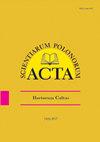过量硼盐对熏衣草生长及离子失衡的联合影响
IF 0.7
4区 农林科学
Q4 HORTICULTURE
引用次数: 0
摘要
一般来说,在干旱和半干旱地区的土壤中,中等至高盐度条件和过量的硼(B)是植物生长的限制因素。为了确定过量硼、盐度胁迫或两者的综合影响,将五种不同水平的B(0、0.3、0.6、1.2和1.8mM)和80mM氯化钠(NaCl)应用于温室中生长的lavandin植物。结果表明,在非盐条件下,与对照相比,施用超高的硼会降低地上部和根部的生物量以及光合色素含量(叶绿素(Chl)a、b和Chl a+b)。此外,与对照相比,所有施用B的生物富集(BCF)(在地上部和根部)、钾(K)浓度(在根部)、K/钠(Na)和钙(Ca)/Na比率(在地下部)以及Ca/B比率(在地上部和根部中)均降低。相反,与对照相比,所有B的施用都导致类胡萝卜素(Car)/Chl比率、B浓度(在芽和根中)、B的易位(TF)和净B积累显著增加。此外,在非盐条件下,与对照相比,施用B显著增加了K(地上部)、Ca(地上部和根部)以及K/Na和Ca/Na比率(根部)的浓度。在生理盐水条件下,与对照相比,所有施用b的叶绿素b、叶绿素a+b、b的BCF(在芽和根中)和钙/硼比(在芽中)都显著降低。然而,在生理盐水条件下,与对照相比,施用B导致Car/Chl比、B的TF、净B积累以及B(在地上部和根部)、K(在地下部)、Ca和Na(在地部和根部)的浓度显著增加。结果表明,尽管在生长参数中没有发现这种情况,但施用NaCl可以有效减轻B毒性对拉旺丁植物的有害影响。在生理盐水条件下,芽中平均B浓度的显著降低可能是这一假设的有力证据。本文章由计算机程序翻译,如有差异,请以英文原文为准。
Combined effects of excess boron and salinity on the growth and ionic imbalance of lavandin (Lavandula × intermedia) plant
Generally, moderate to high salinity conditions and excess boron (B) occur together as limiting factors for plant growth in the soils of arid and semiarid regions. To determine the combined effect of excessive boron, salinity stress, or both, five different levels of B (0, 0.3, 0.6, 1.2, and 1.8 mM) and 80 mM sodium chloride (NaCl) were applied to lavandin plants grown in a greenhouse. The results showed that under nonsaline conditions, biomass production in shoots and roots and photosynthetic pigment contents (chlorophyll (Chl) a, b, and Chl a + b) decreased with exceptionally high B applications compared to the control. Moreover, the bioconcentration (BCF) of B (in shoots and roots), potassium (K) concentrations (in roots), K/sodium (Na) and calcium (Ca)/Na ratios (in shoots), and Ca/B ratios (in shoots and roots) decreased for all B applications compared to the control. In contrast, all B applications caused a remarkable increase in the carotenoid (Car)/Chl ratio, B concentrations (in shoots and roots), translocation (TF) of B, and net B accumulation compared to the control. In addition, under nonsaline conditions, concentrations of K (in shoots), Ca (in shoots and roots), and K/Na and Ca/Na ratios (in roots) were significantly increased by B applications compared with the control. Under saline conditions, significant decreases in Chl b, Chl a + b, BCF of B (in shoots and roots), and Ca/B ratio (in shoots) were observed in all B applications compared to the control. However, under saline conditions, B application caused significant increases in the Car/Chl ratio, TF of B, net B accumulation, and concentrations of B (in shoots and roots), K (in shoots), Ca, and Na (in shoots and roots) compared to the control. It was concluded that although it is not seen in the growth parameters, NaCl application could effectively alleviate the harmful effects of B toxicity in lavandin plants. Under saline conditions, notable decreases in the mean B concentration in shoots could be strong evidence for this hypothesis.
求助全文
通过发布文献求助,成功后即可免费获取论文全文。
去求助
来源期刊
CiteScore
1.30
自引率
14.30%
发文量
61
审稿时长
4-8 weeks
期刊介绍:
In Acta Scientiarum Polonorum Hortorum Cultus we publish original research papers and review articles containing new and significant information on broad aspects of horticulture and related disciplines. The papers are published in English only, in six issues yearly.

 求助内容:
求助内容: 应助结果提醒方式:
应助结果提醒方式:


